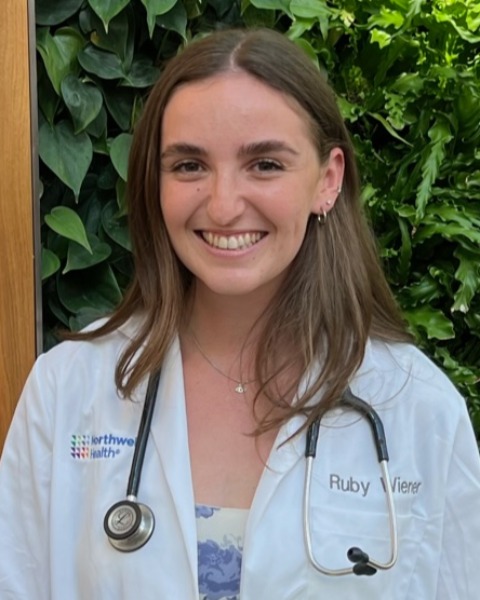Emergency Medicine 9
Session: Emergency Medicine 9
127 - Implementation of Food Insecurity Screening Among Families Presenting to a Pediatric Emergency Department
Sunday, April 27, 2025
8:30am - 10:45am HST
Publication Number: 127.5354
Caroline Weiss, Cohen Children's Medical Center, Glen Oaks, NY, United States; Chris Tempesta, Cohen Children's Medical Center, Bethpage, NY, United States; Lyndsay J. Lee, Donald and Barbara Zucker School of Medicine at Hofstra/Northwell, Douglaston, NY, United States; Ronak Patel, Donald and Barbara Zucker School of Medicine at Hofstra/Northwell, Queens, NY, United States; William Krief, Cohen Children's Medical Center, Centerport, NY, United States; Isabella Yu, Cohen Children's Medical Center, New Hyde Park, NY, United States; Tabetha Garver-Mosher, Northwell Health, Brooklyn, NY, United States; Hannah Sturm, Donald and Barbara Zucker School of Medicine at Hofstra/Northwell, Brooklyn, NY, United States; Anita Pillai, Cohen Children's Medical Center, New Hyde Park, NY, United States; Caroline Weiss, Cohen Children's Medical Center, Glen Oaks, NY, United States; Ruby Wiener, Donald and Barbara Zucker School of Medicine at Hofstra/Northwell, Brooklyn, NY, United States; Jane Cerise, Northwell Health Office of Academic Affairs, New Hyde Park, NY, United States

Ruby Wiener, BS (she/her/hers)
Medical Student
Donald and Barbara Zucker School of Medicine at Hofstra/Northwell
Brooklyn, New York, United States
Presenting Author(s)
Background: Food insecurity is prevalent among families in the Pediatric Emergency Department (PED). While studies have explored screening methods for food insecurity, few have followed up with families to determine if they can connect with resources after their visits. This study aimed to assess the prevalence of food insecurity in families presenting to the PED and evaluate the effectiveness of resource provision.
Objective: To assess the prevalence of food insecurity and the utilization rate of food resources provided to families presenting to a PED at a tertiary care urban children’s hospital.
Design/Methods: In this IRB-approved single-center prospective cohort study at a tertiary care children’s hospital, English and Spanish-speaking families presenting to the PED were asked to complete the validated 2-question Hunger Vital Sign (HVS) screen. All families received a list of local food assistance resources and had the option for a follow-up call from a researcher. Those who assented received a text message one week later with a PDF of resources and a call two-week post-visit to assess resource utilization and interest in connecting with a PED social worker. Patient demographic information was also collected.
Results: Of the 193 families recruited who consented to participate in the study and completed the HVS screen, 55 (28%) screened positive for food insecurity. Thirty-eight (70%, n=55) of families who screened positive utilized public insurance. Of those who screened positive, 34 (62%, n=55) consented to be called back two weeks later, of which 10 (29%) were reached. Of those families contacted, 1 (10%) utilized the resources provided and 6 (60%) requested to speak with a social worker regarding gaining access to additional food resources. Additionally, 3 of the 20 (15%) families who screened negative for food insecurity and were able to be reached 2 weeks following their ED visit also requested to speak with a social worker.
Conclusion(s): The current distribution of local resource contacts is insufficient to effectively address food insecurity among families presenting to the PED. As clinicians screening for food insecurity, having referral resources and social work support readily available is important to assist families who may lack other support options. Ongoing screening and follow-up calls will help identify barriers to accessing these essential resources and will enhance our understanding of the needs of our patients and their families. By fostering stronger connections with local agencies, we can improve support for those facing food insecurity and promote better health outcomes.

